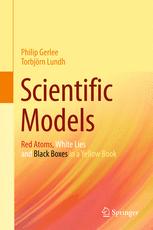

Most ebook files are in PDF format, so you can easily read them using various software such as Foxit Reader or directly on the Google Chrome browser.
Some ebook files are released by publishers in other formats such as .awz, .mobi, .epub, .fb2, etc. You may need to install specific software to read these formats on mobile/PC, such as Calibre.
Please read the tutorial at this link. https://ebooknice.com/page/post?id=faq
We offer FREE conversion to the popular formats you request; however, this may take some time. Therefore, right after payment, please email us, and we will try to provide the service as quickly as possible.
For some exceptional file formats or broken links (if any), please refrain from opening any disputes. Instead, email us first, and we will try to assist within a maximum of 6 hours.
EbookNice Team

Status:
Available5.0
14 reviewsA zebrafish, the hull of a miniature ship, a mathematical equation and a food chain - what do these things have in common? They are examples of models used by scientists to isolate and study particular aspects of the world around us. This book begins by introducing the concept of a scientific model from an intuitive perspective, drawing parallels to mental models and artistic representations. It then recounts the history of modelling from the 16th century up until the present day. The iterative process of model building is described and discussed in the context of complex models with high predictive accuracy versus simpler models that provide more of a conceptual understanding. To illustrate the diversity of opinions within the scientific community, we also present the results of an interview study, in which ten scientists from different disciplines describe their views on modelling and how models feature in their work. Lastly, it includes a number of worked examples that span different modelling approaches and techniques. It provides a comprehensive introduction to scientific models and shows how models are constructed and used in modern science. It also addresses the approach to, and the culture surrounding modelling in different scientific disciplines. It serves as an inspiration for model building and also facilitates interdisciplinary collaborations by showing how models are used in different scientific fields.
The book is aimed primarily at students in the sciences and engineering, as well as students at teacher training colleges but will also appeal to interested readers wanting to get an overview of scientific modelling in general and different modelling approaches in particular.